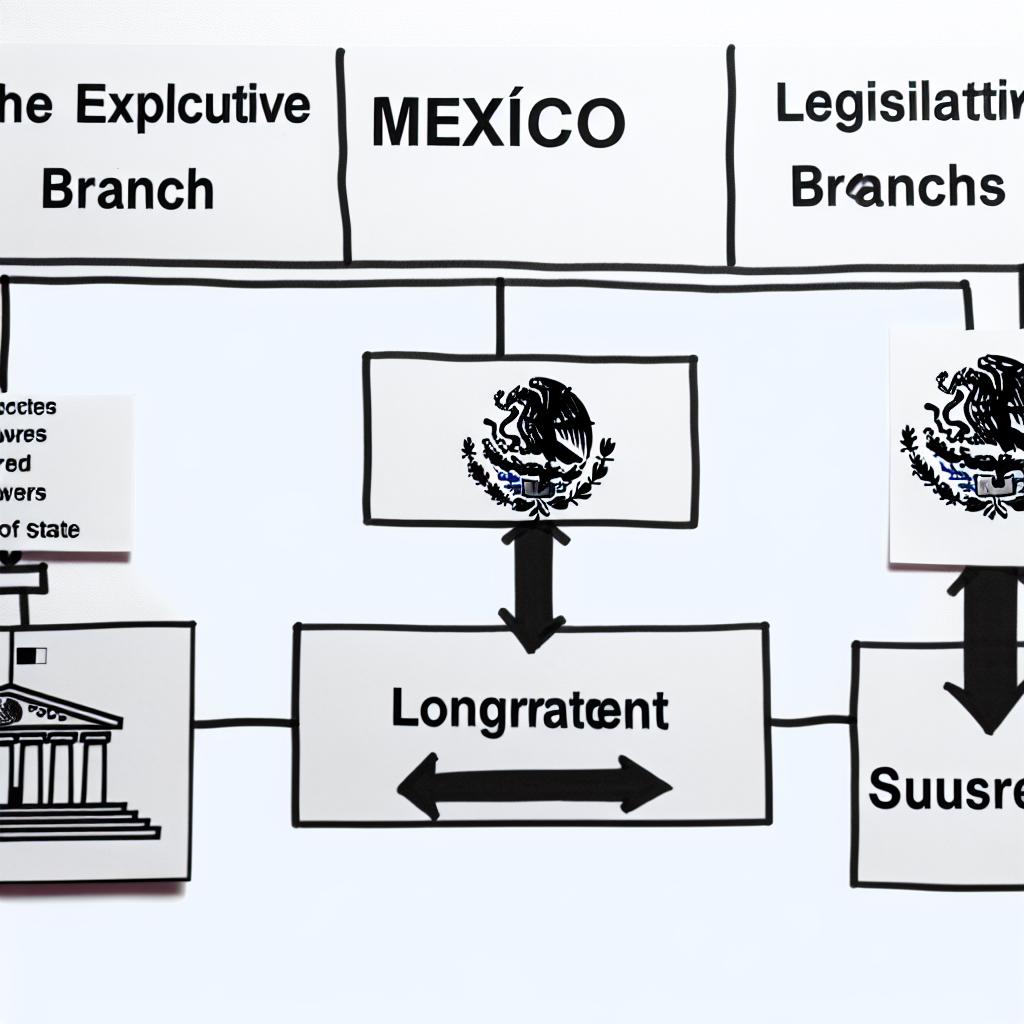Political Structure of Mexico
Mexico is a significant country in North America, known for its rich culture and complex political system. As a federal republic, its political structure involves multiple levels of governance, designed to ensure a balanced distribution of power. This structured system is deeply rooted in the principles established by the Mexican Constitution, which was originally enacted in 1917 and remains an essential document guiding the political framework of the nation.
Federal Government
At the core of the federal governance is the division into three distinct but interrelated branches: the executive, legislative, and judicial branches. Each serves a specific function, ensuring the smooth operation of the country’s democratic processes and checks and balances.
Executive Branch
The executive branch is primarily led by the President of Mexico, who holds significant responsibilities in running the nation. The President is elected for a term of six years and is ineligible for immediate re-election, symbolizing a commitment to preventing prolonged power accumulation by any single individual. As the head of state and government, the President’s duties extend across various areas, including law enforcement and national defense, serving as the commander-in-chief of the armed forces. For those interested in current administrative agendas and developments, further details about the President’s activities and initiatives can be accessed on the official website of the Mexican Presidency.
Legislative Branch
The legislative power in Mexico resides in a bicameral system, which ensures comprehensive representation of the populace in decision-making processes. This branch is composed of two houses: the Senate and the Chamber of Deputies.
The Senate, which consists of 128 members, plays a pivotal role in shaping national policies and laws. Senators are elected through both a direct vote and a system of proportional representation, serving terms of six years each. This dual approach ensures a fair and balanced representation of the Mexican states in federal legislation.
In tandem, the Chamber of Deputies is made up of 500 members, each elected to serve a term of three years. The combination of majority and proportional representation used in the election of Deputies helps in reflecting the diverse political and cultural landscape of Mexico across various regions.
Judicial Branch
An essential component of the government, the judiciary, functions independently of the executive and legislative branches. The Mexican Supreme Court stands as the pinnacle of the judicial system and comprises 11 justices. These justices hold the responsibility of interpreting laws and upholding the Mexican Constitution. Appointed by the President and confirmed by the Senate, they serve 15-year terms, bringing stability and continuity to the judicial process.
State Governments
Mexico’s federal nature is further exemplified by its division into 32 entities: 31 states and Mexico City, each holding substantial autonomy. Every state operates under its own constitution and possesses an executive branch headed by a governor. Governors are elected every six years, and their role is crucial in state administration and governance.
Each state also has its own legislature, usually unicameral, with representatives elected for varying terms, typically three years. These legislative bodies work to ensure that state laws align with local needs and circumstances while remaining consistent with the federal system.
Municipal Governments
At the local level, the political framework is even more intricate with numerous municipalities scattered across the country. Over 2,400 municipalities exist, each with its own municipal government headed by a municipal president or mayor. These officials are elected for three-year terms and are tasked with addressing local issues and managing public resources and services.
Municipal governments hold substantial autonomy, allowing for tailored and efficient management of community needs, economic activities, and public utilities, which are integral to the daily lives of Mexico’s citizens.
Political Parties
Mexico’s political landscape is characterized by a vibrant multi-party system. Several parties play significant roles in shaping policies and opinions across the country.
Among the prominent political players is the Institutional Revolutionary Party (PRI), a historically significant party that has influenced Mexico’s political scene for much of the 20th century. The National Action Party (PAN) represents another major force, traditionally advocating for economic liberalization and conservative social policies.
Additionally, the Party of the Democratic Revolution (PRD) is known for its progressive stance, while the National Regeneration Movement (MORENA), the current ruling party as of 2023, promotes leftist policies and social reforms.
For those seeking a deeper understanding of these parties, their policies, and their influence, the National Electoral Institute (INE) provides valuable resources and up-to-date information on Mexico’s political dynamics.
Conclusion
The political structure of Mexico is a testament to its commitment to maintaining democratic principles and federalism. By dividing power among multiple levels of government, Mexico accommodates its diverse cultural and political identities. The interplay between federal, state, and municipal governments facilitates effective governance, allowing Mexico to adapt and evolve in a rapidly changing world.
With a political system capable of reflecting the needs and aspirations of its people, Mexico remains a significant player on the international stage. For those eager to explore more about its intricate political and governmental framework, a plethora of resources, including official web portals, are available to provide comprehensive insights and updates on the continuously evolving political landscape.







